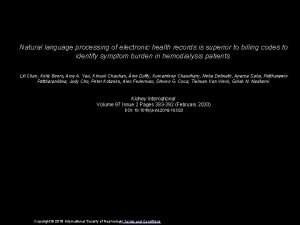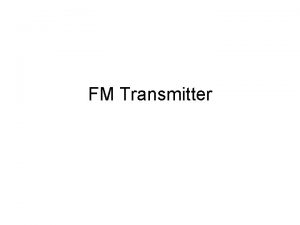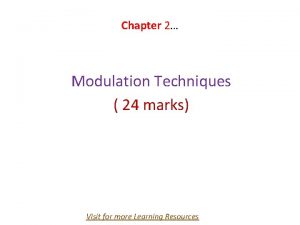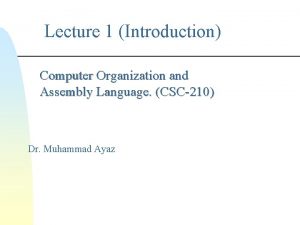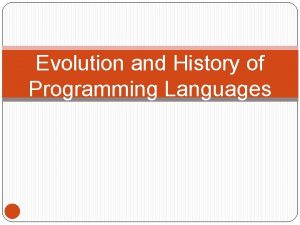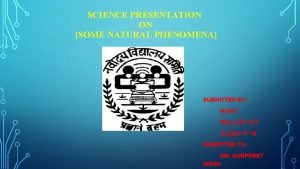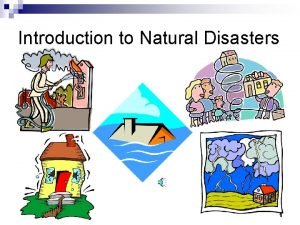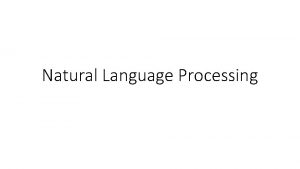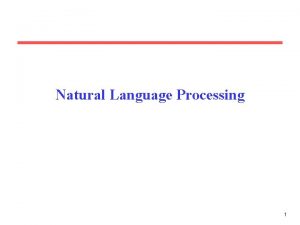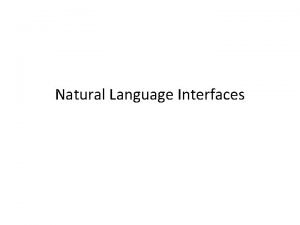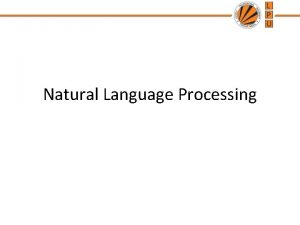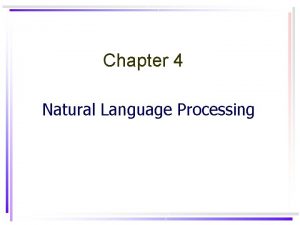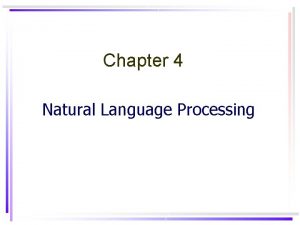NLP Introduction to NLP Natural Language Generation Using




















- Slides: 20

NLP

Introduction to NLP Natural Language Generation Using Features and Unification

Example ( : process save-1 : actor system-1 : goal document-1 : speechact assertion : tense future ) Input is underspecified

The Functional Unification Formalism • • Aka FUF Based on Kay’s (83) formalism Partial information, declarative, uniform, compact Same framework used for all stages: syntactic realization, lexicalization, and text planning

Functional Analysis • • Functional vs. structured analysis “John eats an apple” Actor (John), affected (apple), process (eat) Suitable for generation

Partial vs. Complete Specification • • Voice: An apple is eaten by John Tense: John ate an apple Mode: Did John eat an apple? Modality: John must eat an apple action = actor = object = eat John apple

Unification • • • Target sentence Input FD Grammar Unification process Linearization process

Path notation • View an FD as a tree • To specify features, use a path – {feature … feature} value – e. g. {prot number} • Also use relative paths – {^ number} value = the feature number for the current node – {^ ^ number} value = the feature number for the node above the current node

Sample input ((cat s) (prot ((n ((lex john))))) (verb ((v ((lex like))))) (goal ((n ((lex mary))))))

Sample Grammar ((alt top (((cat s) (prot ((cat np))) (goal ((cat np))) (verb ((cat vp) (number {prot number}))) (pattern (prot verb goal))) ((cat np) (n ((cat noun) (number {^ ^ number}))) (alt (((proper yes) (pattern (n))) ((proper no) (pattern (det n)) (det ((cat article) (lex “the”))))))) ((cat vp) (pattern (v)) (v ((cat verb)))) ((cat noun)) ((cat verb)) ((cat article)))))

Sample Output ((cat s) (goal ((cat np) (n ((cat noun) (lex mary) (number {goal number}))) (pattern (n)) (proper yes))) (pattern (prot verb goal)) (prot ((cat np) (n ((cat noun) (lex john) (number {verb number}))) (number {verb number}) (pattern (n)) (proper yes))) (verb ((cat vp) (pattern (v)) (v ((cat verb) (lex like))))))

Unification Example

Unify Prot

Unify Goal

Unify VP

Unify Verb

Finish

The SURGE grammar (Elhadad) • Syntactic realization front-end • Variable level of abstraction • 5, 600 branches and 1, 600 alts Lexical chooser Lexicalized FD SURGE Syntactic FD Linearizer Morphology Text

Links • Simple. NLG (Gatt and Reiter) – https: //github. com/simplenlg • FUF in NLTK – https: //github. com/nltk_contrib/tree/master/nltk_contrib/fuf

NLP
 Natural language processing nlp - theory lecture
Natural language processing nlp - theory lecture Natural language processing lecture notes
Natural language processing lecture notes Natural language generation for electronic health records
Natural language generation for electronic health records Stahl
Stahl You are good and your mercy
You are good and your mercy Simlish phrases
Simlish phrases Footstep power generation using piezoelectric sensor
Footstep power generation using piezoelectric sensor Fm generation using vco
Fm generation using vco Direct method of fm generation using varactor diode
Direct method of fm generation using varactor diode Example of fourth generation programming language
Example of fourth generation programming language Disadvantages of computer
Disadvantages of computer Differences between compiler and interpreter
Differences between compiler and interpreter Natural hazards vs natural disasters
Natural hazards vs natural disasters Natural capital
Natural capital Using system.collections.generic
Using system.collections.generic Accumulator ac
Accumulator ac Introduction to natural vegetation
Introduction to natural vegetation Some natural phenomena ppt
Some natural phenomena ppt Introduction natural disasters
Introduction natural disasters Definition of disaster
Definition of disaster Natural language processing vietnamese
Natural language processing vietnamese


